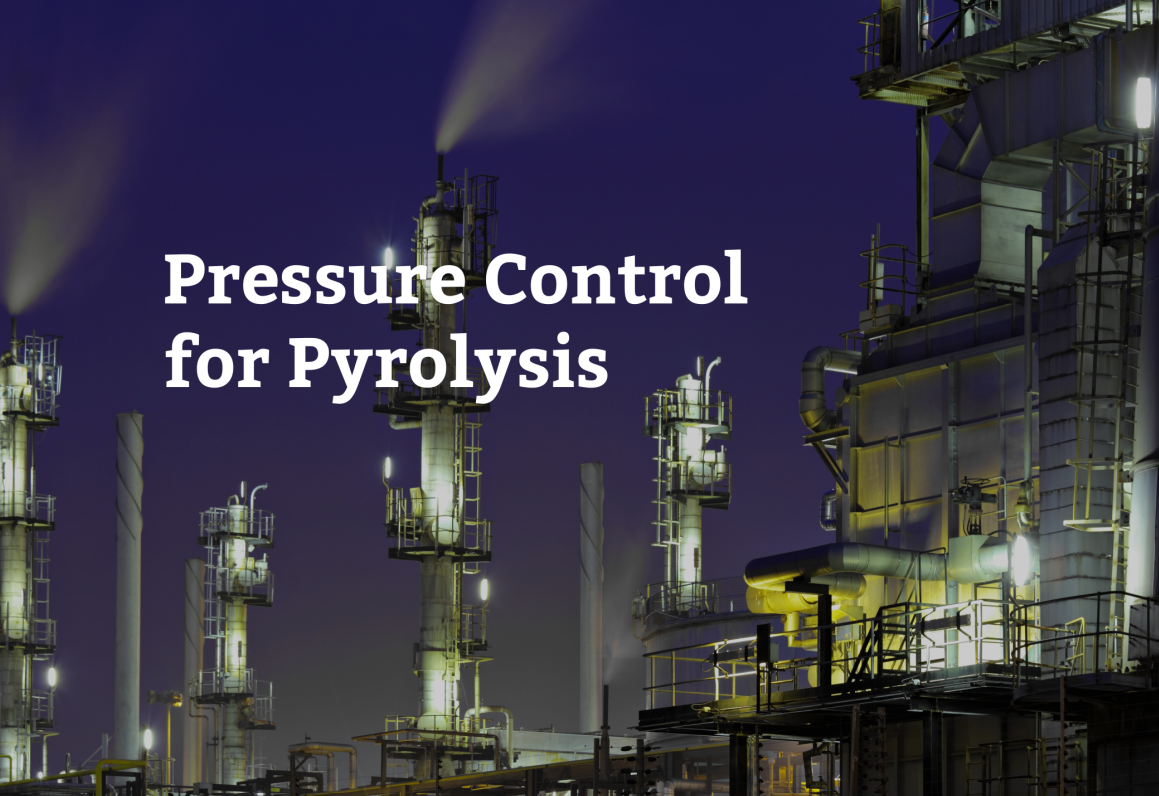The Equilibar valve is a dome-loaded pressure regulator with pilot operation. This means that a gas is fed into the top (dome) area of the regulator to provide the pressure setpoint for the process. The Equilibar BPR keeps its inlet pressure equal to the setpoint pressure on its dome in a 1:1 relationship. A secondary “pilot” pressure regulator sets the pressure of the gas on the dome, and can be manual or electronic.
The multi-orifice design allows it to control pressure across a wide range of flow rates and avoid issues with cavitation. A supple diaphragm is the Equilibar valve’s only moving part, enabling nearly instantaneous, frictionless operation without hysteresis or cracking pressure.
Its simple design makes it easy to maintain and the variety of material options available for the valve components make it highly adaptable for corrosive or sanitary applications.

Equilibar back pressure regulator designed for precision liquid control
How Equilibar Valves Help in Liquid Pressure Control Applications
Below are some specific applications where Equilibar valves are very useful for controlling liquid applications.
Pump Liquid Pressure Control (Coating, Injection, Dosing, etc.)
Equilibar valves are used in numerous liquid pump control applications to improve operation and reduce pulsations. The Equilibar BPR can be used in concert with low cost pumps to provide a sophisticated pressure control system. The BPR can be placed in a recirculating loop with virtually any type of pump to allow the process control system to explicitly command system pressure using an electronic pilot pressure regulator. Or set the Equilibar BPR up with a fixed reference pressure signal from a manual pilot regulator for controlling precisely constant pressure across widely varying flow rates.
Typical pump pressure control applications:
- Precision spray coating
- Precision chiller or cooling loop control
- Precision die coating
- Hydraulic test stands
- Military avionics test stands
- Industrial pump recirculation control
See also discussion of pressure bypass regulators and high resolution flow control valves
Increasing Pump Discharge Pressure
Oftentimes centrifugal pumps are unable to stop the flow-through of liquid because of high supply head pressures.
In other applications, Variable Frequency Drives (VFDs) cannot control liquid flow through the pump at low discharge flowrates because the output pressure of the pump is too low.
In these cases, an Equilibar back pressure regulator is used to raise the pump’s output head to always exceed its supply head.
Precision Closed Loop Control (Electro-pneumatic regulator w/ external feedback)
For most applications, the Equilibar BPR is precise enough to be used with a simple setpoint pressure input. However for some automation applications where other factors come into play in the system, it may be useful to have closed loop control using an external pressure transmitter.
With its unparalleled precision and ultra fast response time, an Equilibar BPR can be paired with an electro-pneumatic pilot regulator for excellent closed-loop process control and easy automation. By using an electronic pressure regulator (E/P, I/P) with external feedback, it is possible to use feedback from a process pressure transmitter to set your desired pilot setpoint.
The Equilibar valve provides numerous benefits over traditional control valves in these closed-loop applications. Such benefits include extremely wide flow range, ultra fast reaction times, and ease of PID tuning.
Automatic Vessel Level Control
The precision and simplicity of the Equilibar fluid control valve make it ideal for controlling the level in vessels and baths. It is easily automated using an electronic pilot regulator which can be paired with the process control system set to a specified level.
For instance, as in the sketch to the right, a 60 inch aqueous level in a tank or bath could easily be achieved from a batch control recipe by sending a 2.2 psig setpoint pressure to the dome of the Equilibar BPR. (1 psig = 28 inWC). This setup provides a particularly elegant solution for an automatic bath level control system where constant water inflows are present.
Shear Sensitive Fluid Handling
The Equilibar BPR can tackle tough shear sensitive fluids and dispersions where traditional fluid controls fail. The elastomeric diaphragm throttles fluid pressure in a less abrupt manner than traditional valve seats. The self adjusting nature of the membrane valve seat allows the valve to easily ingest and pass particulate matter as well as handle viscous fluids.
The biggest advantage of this device for shear sensitive applications, however, is how this device complements the strengths of diaphragm pumps. These pumps excel in the handling of shear sensitive fluids, emulsions, and dispersions. However, problems with pulsation and output pressure make these pumps difficult to use in automated applications. The Equilibar® control valve not only controls the pressure of these sensitive solutions, but also modulates the pressure pulsations. The result is an extremely elegant and cost-effective solution for handling these difficult solutions.
Anti-Cavitation for Liquid Processes
Equilibar’s multi-orifice design natively reduces susceptibility to cavitation by dividing the flow path amongst many orifices. Unlike traditional valves, Equilibar’s direct-sealing diaphragm multiple orifice design features a significantly different geometry of fluid acceleration and deceleration. Over many years of selling Equilibar valves for liquid pressure control, cavitation has not been reported. Detailed information can be found on our anti-cavitation explainer page.

Using an Equilibar BPR at the outlet of a pump to increase discharge pressure

Precision automated control using an electronic pressure setpoint signal to an Equilibar BPR

An Equilibar back pressure regulator controlling the level of a bath in a 1:1 ratio to the dome pressure setpoint



